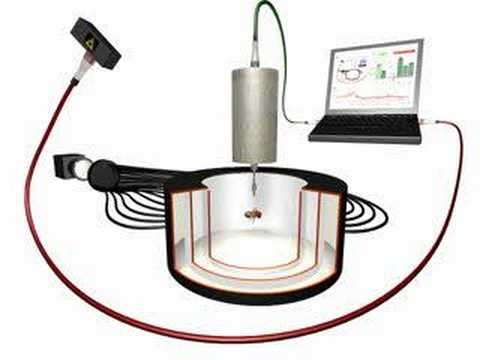What interacting with publishers felt like for this open access proponent
In: science politicsAt various meetings I get often asked by early career researchers, librarians or other colleagues what my interactions with publishers felt like. I usually answer that my last twelve years campaigning for infrastructure reform felt like academia was receiving the big middle finger from publishers:

No matter what you try, academia, we’ll still get your money, stupid suckers! Gotta go, need to cash that check you just gave me, so I can spend the money before you give me the next one.
Given how often I have been asked to convey my experience, I have often contemplated on how to best bring that message across in a blog post. There was this one time, in a podium discussion, when one of the vice-presidents of Elsevier in all seriousness exclaimed that indeed they add value – when their embargoes and their funding of the RWA showed they did not themselves believe in such value and everybody, including other publishers, already publicly agreed that today’s academic publishers add little, if any, value. At too many other instances to recount, publishers talked of “our content” when referring to scholarly works – in the presence of academics. Again other instances are less personal, but equally direct, for instance when they issue “sharing policies” telling us what we are allowed to do with our works, or citing “because we can” when raising prices, or insulting our intelligence when defending their practice of stealing our copyright.
Today, however, I found a post by publisher advisor Joseph Esposito which I now just have to cite to make my point:
Double-dipping is not a dark blemish on one’s character but an emergent property of current open access (OA) practices.
Apparently, by asking for public access, we just forced publishers to increase their profitability and we should stop blaming them for taking advantage of us.
whatever the benefits of OA, reduced costs are not among them.
A subscription article currently costs the taxpayer on average about ~US$5000. An open access article, published with modern technology and on a non-profit basis typically incurs costs of less than US$500. Stating the above essentially means that the author thinks his audience lacks fundamental algebra.
But the hybrid or pockmarked journal is also an irritant, as tracking all the rules for what should and should not be OA is a pain in the neck.
Again, academics are infecting the publishers’ beautiful money-making scheme with the pocks of public access. How dare they give publishers a neck ache and then even have the gall to complain if publishers sooth their ache with wads of cash straight out of the taxpayers’ pockets!
The invisible overhead continues to tick upward, increasing costs (while adding no value), prompting publishers to look for ways to offset that growing expense — or even, if they are shrewd, to turn it into a profit center.
We should not blame publishers if shrewd managers find ways to extort even more than the already record-setting profit margins from the public purse! After all, we brought this whole access nightmare on ourselves. Had we just kept quiet as cash cows ought to be and been content with getting a 17th century infrastructure for a 24th century price tag, then none of this would have had to happen.
The obvious way to do this is to increase the price of the journal, which is relatively easy to do since not many libraries pay retail prices for journals; rather, journals are mostly purchased as part of large packages in which the cost of an individual journal is obscured. The sleight of hand here is that the increase in retail price is immediately offset by a discount.
Of course we raise prices only to then discount you the price hike, because
This is such a common marketing tactic in our society that it surprises me when it has to be explained to anyone. Those men’s polo shirts at Brooks Brothers are “on sale” for $49, reduced from $75. But when were they ever $75? They were put “on sale” the day they arrived at the store. At $49 the store owner may be working with a 50% margin. What’s not to like? The retailer makes money and the consumer goes home wearing a new shirt, smiling smugly for having gotten such a good deal.
It is quite obvious why Mr. Esposito joins the publishers he advises in their impression that they need to explain such basic tenets to academics, in particular inasmuch as it serves to rub it in how sheepishly academic institutions have let themselves be ripped off for the last half century or more.
This will make it easier to maintain double-dipping. It is here to stay, though its form will evolve, the better to ensure the revenue of the publishers, as long as journals’ brands carry weight with tenure and promotion committees (not to mention scholars’ sense of themselves).
And as if the previous paragraph wasn’t already insulting enough, let’s pile it on and double down on how academics are so much more stupid than their inflated egos tell them, which makes them such easy prey for scammers like academic publishers.
So now you know what publishers think of you, you snotty little academic brat! Publishers take your work for free, sell it for an insane profit and use some the proceeds not spent on yachts and private jets not only to counteract any reform you might envision, but also to insult you at the same time with actions and words.
My next post will likely be about what I think academia might be going to do about this. It’ll probably be a very, very short post.















Academic managers are to blame for this. Academic research has become an article farm, for the benefit of publishers. Is there any serious investigation on the personal advantages they gain for supporting and getting support from the publishers? Maybe a wikileaks like site would be helpful 🙂
lol, there may be something to be leaked there 🙂
This varies from country to country, of course, but at least from my perspective faculty are more than happy to play this game, without any skin in it themselves. So I would guess that in many cases, academic administrators, at most, bear a minor responsibility, YMMV.
A couple of years ago, the Harvard Libraries made a stink about the subscription costs for academic journals. I was sort of hoping they might follow it up with action – imagine if labs had a line-item in their budget that went to the libraries, but was refunded if the lab only published in OA journals?
Authors DO have skin in the game – money spent on subscriptions gets taken out of grant budgets in the form of overhead – it’s just that the costs are obscured.
Yes, it’s a clever idea to force the academics to realize the money they’re spending on access! However, the implementation is always non-trivial. The funds for library subscriptions come from all kinds of revenue streams, depending on university and country. For instance, 60% of overhead goes back to grant applicants, at our university, to incentivize grant writing. As I have written elsewhere, the currently most attractive solution, to me, is to cancel all subscriptions: https://bjoern.brembs.net/2016/05/why-havent-we-already-canceled-all-subscriptions/
Though the radical in me likes that idea, I’m pretty sure that the vast majority of my colleagues would freak out if all of a sudden they didn’t have one-click access to the latest Nature paper. I know you addressed that in your post, but I think this solution is also “non-trivial.” And I’m imagining the blow-back from the majority of my colleagues, even the ones my age (grad student/postdoc age) that you’d think would be more amenable to new technologies…
When I talk about these things most of them think I’m bonkers… Selling them on a complete overhaul would be rough.
What you mean is called a ‘link-resolver’ and given the technologies available now, if done right (ok, maybe non-trivial, but feasible and not too technically challenging), for many institutions it may even mean *increasing* single-click access as well as expanding ‘few-click’ access, as subscriptions eliminate the incentives for a clever use of most of these technologies.
I consult with libraries as well as publishers (among other organizations). Please do not characterize me as a publisher advisor without the broader context.
Fair point. I now link your name to a previous post of mine where I have not only described what I understood from the information I could find about you, but also link to the sources. I hope that suffices?
I am not troubled by any of this. It is not relevant. The economy will do what the economy will do, regardless of what you call me.
https://wiki.lib.sun.ac.za/index.php/SUNScholar/Self-Hosting_Value_Proposition
Exactly!